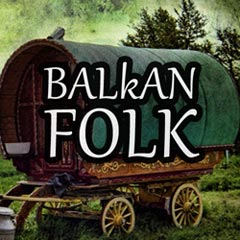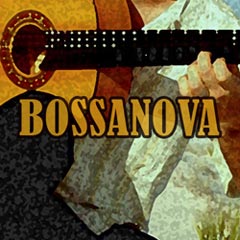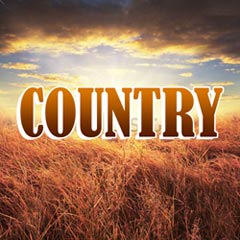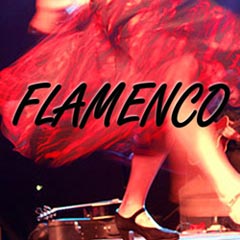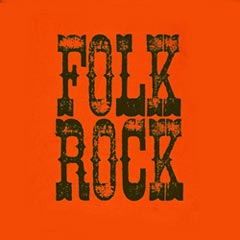Folk rock
ON AIR - PROGRAMMING
Songwriters strip rock of the electric guitar and give it a folk vibe, a successful move. Heavily invested, traditional lyrics and country rhythms and songs brought from stage to stage, country to country. Folk rock music is an iconic subgenre of popular music originating in the 1960s. It has earned its place as one of the most influential and successful genres throughout modern history. Fans are drawn to its dynamic mix of traditional instruments, such as acoustic guitars and banjos, alongside strong cultural lyrics. Singers have often been political activists expressing solidarity with their message through this creative medium. The melancholic melodies below its bluesy soundscapes energize and reinvent the genre through both modern and retro revivalism. With Phil Ochs, Richard Fari–a, Joan Baez as three massive influencesÑ respectfully known as 'the Holy Trinity'Ñ folk rock continues to define a lasting movement that honors classic roots and reimagines iconic melodies ahead today's surging trends. Folk rock mixes traditional folk music with rock music. The pioneers of this genre are the Birds, influenced by Bob Dylan.
The Multi-Faceted Folk Rock Genre: An Exploration of Its Roots and Continuation
Music lovers explore genres and sub-genres, trying to get the utmost pleasure and entertainment out of their favorite tunes. Among the many sub-genres of popular music, folk rock stands out for its dynamic mix of traditional instruments and strong cultural lyrics. It also has significant political connotations that have drawn fans to the genre for decades. From its roots in the 1960s, folk rock has become one of the most influential and successful genres in music history, inspiring both modern and retro revivalism. In this blog post, we will explore the roots of the folk rock genre, its influences, and the contributions of significant songwriters who helped shape its development.
Folk rock combines elements of both traditional folk music and rock, blending traditional instruments like the guitar, banjo, and mandolin with rock rhythms and sounds. The term folk rock is believed to have originated in the mid-1960s when electric guitars gave way to acoustic guitars and other folk instruments in rock music. The genre was popularized in the United States and the UK by artists like Bob Dylan, The Byrds, and Led Zeppelin, who seamlessly blended folk and rock music to create a unique sound.
Folk rock musicians often used their lyrics to express their political and social views. The genre has a reputation for being overtly political, with many of its most significant songs serving as protest anthems. For example, Phil Ochs, a folk singer known as the singing journalist, wrote songs that directly addressed the cultural and political issues of his time, such as the Vietnam War, civil rights, and poverty. The lyrics of Joan Baez, another influential folk singer, often focused on social justice issues, highlighting the struggles of marginalized groups in the US and beyond.
Richard Fariña was also an essential singer-songwriter who contributed to the development of folk rock. Fariña, along with his wife Mimi, brought new sounds to the genre, incorporating different musical styles and rhythms. His music was very popular in the 1960s and inspired many folk musicians of the era.
The folk rock movement experienced a revival in the 1990s, with bands like The Lumineers, Mumford and Sons, and The Avett Brothers adopting the genre's acoustic sounds and traditional lyrics. In recent years, younger musicians have been drawn to folk rock, reimagining its classic roots and bringing their sensibilities to the genre. The genre has remained popular and continues to attract new fans, with festivals around the world dedicated to folk rock and its many iterations.
The sub-genre of folk rock has gone through many iterations over the years, from its roots in the 1960s and its influence on popular music to its continued relevance today. Its unique blend of traditional instruments and rock rhythms, infused with political and cultural lyrics, has made it one of the most significant and influential genres in music history. From the contributions of Phil Ochs, Joan Baez, and Richard Fariña to the current crop of young artists reimagining the genre, the multi-faceted nature of folk rock ensures its place as a dynamic and important genre. With an enduring appeal, folk rock continues to inspire and move music fans around the globe.
The Multi-Faceted Folk Rock Genre: An Exploration of Its Roots and Continuation
Music lovers explore genres and sub-genres, trying to get the utmost pleasure and entertainment out of their favorite tunes. Among the many sub-genres of popular music, folk rock stands out for its dynamic mix of traditional instruments and strong cultural lyrics. It also has significant political connotations that have drawn fans to the genre for decades. From its roots in the 1960s, folk rock has become one of the most influential and successful genres in music history, inspiring both modern and retro revivalism. In this blog post, we will explore the roots of the folk rock genre, its influences, and the contributions of significant songwriters who helped shape its development.
Folk rock combines elements of both traditional folk music and rock, blending traditional instruments like the guitar, banjo, and mandolin with rock rhythms and sounds. The term folk rock is believed to have originated in the mid-1960s when electric guitars gave way to acoustic guitars and other folk instruments in rock music. The genre was popularized in the United States and the UK by artists like Bob Dylan, The Byrds, and Led Zeppelin, who seamlessly blended folk and rock music to create a unique sound.
Folk rock musicians often used their lyrics to express their political and social views. The genre has a reputation for being overtly political, with many of its most significant songs serving as protest anthems. For example, Phil Ochs, a folk singer known as the singing journalist, wrote songs that directly addressed the cultural and political issues of his time, such as the Vietnam War, civil rights, and poverty. The lyrics of Joan Baez, another influential folk singer, often focused on social justice issues, highlighting the struggles of marginalized groups in the US and beyond.
Richard Fariña was also an essential singer-songwriter who contributed to the development of folk rock. Fariña, along with his wife Mimi, brought new sounds to the genre, incorporating different musical styles and rhythms. His music was very popular in the 1960s and inspired many folk musicians of the era.
The folk rock movement experienced a revival in the 1990s, with bands like The Lumineers, Mumford and Sons, and The Avett Brothers adopting the genre's acoustic sounds and traditional lyrics. In recent years, younger musicians have been drawn to folk rock, reimagining its classic roots and bringing their sensibilities to the genre. The genre has remained popular and continues to attract new fans, with festivals around the world dedicated to folk rock and its many iterations.
The sub-genre of folk rock has gone through many iterations over the years, from its roots in the 1960s and its influence on popular music to its continued relevance today. Its unique blend of traditional instruments and rock rhythms, infused with political and cultural lyrics, has made it one of the most significant and influential genres in music history. From the contributions of Phil Ochs, Joan Baez, and Richard Fariña to the current crop of young artists reimagining the genre, the multi-faceted nature of folk rock ensures its place as a dynamic and important genre. With an enduring appeal, folk rock continues to inspire and move music fans around the globe.
What are you thinking about?

